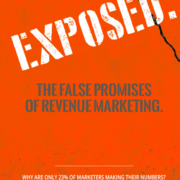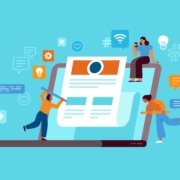Solving The Persona and Product Marketing Paradox: Engagement Personas

More insights for the 85% of B2B marketers who don’t have effective personas!
Mapping out your buyers’ pain and organizing via Pain Maps™ to enable the ULTIMATE Goal: Informing Engagement Personas™.
There are many different perspectives and philosophies on persona development. This makes sense, as they’re the most critical element of creating messaging and informing Message Maps™…then identifying and developing content aligned with the buy cycle…and ultimately validating the various components of a true buyer engagement strategy. In the end, persona development should be defined by how it’ll be used – in terms of purpose and context that will drive messaging, and ultimately content strategy. Other marketers will use it more as a “playbook” of all possible or available buyer insights. I’m not saying either is right or wrong, but it’s why we’ve created a new category called Engagement Personas™.
The challenge most companies face is who “owns” and is responsible for the company’s personas. While most companies have a demand generation team, the task of persona development often resides with Product Marketing. This seems logical at many levels—most importantly, because Product Marketing is at the intersection of product strategy and the actual buyers. However, the personas they create typically focus on demographic, firmographic, and psychographic descriptions of buyers. These are all very important requirements for buyer understanding, but as mentioned, the single most important function Engagement Personas™ must achieve is helping organize and prioritize buyers by pain points to drive engagement.
That’s not the only difference. It’s also true that personas developed by Product Marketing typically lead to “domain-centric” content, while personas ideally driven by Demand Marketers lead to “engagement-focused” content. The latter is what you want—it’s THE foundational element of a buyer engagement strategy.
Now, don’t get me wrong…Product Marketing is THE single greatest source of insights and your greatest ally in creating both Engagement Personas™ and, ultimately, engagement-focused content. Their knowledge is invaluable in the process. The differentiation I’m making here is that the disciplines and approaches are simply different from those required for true engagement marketing, as practiced by the demand generation folks.
This is one of the most important steps and crucial drivers…most often missing…of message development and content creation. However, these critical pain points are often buried within the Product Marketing personas, as well as current content. More likely than not, they’re hidden under an avalanche of content that addresses benefits, features, requirements, and so on.
The foundation of these requisite Engagement Personas™ is based on key buyer and influencer roles within the target audience. These represent an excellent buyer-centric perspective and are rich with each group’s pain points relative to your solutions. The key is to organize and prioritize the pain points for each in order to connect them to the larger, segment-specific narrative.
Pain Maps™ enable you to list all the pain points you identify through a rigorous process of research.
These Pain Maps™ then enable you to create Engagement Personas™ by prioritizing the pain points that will ultimately inform the message development process.
The next step is creating Message Maps™, which provide the insights required to create compelling content (including repurposing existing content – a concept I’ll review in subsequent posts).
Now…let’s back up to the beginning and revisit the concept of a Pain Map™. Once you’ve organized pain by buyer types, you can now translate those into buyer-centric Engagement Personas™. Both Pain Maps™ and Engagement Personas™ are created through interviews with key stakeholders, primary and secondary research, surveys, and, most importantly, interviews with your target audience. That includes a mix of customers, prospects, and those outside of your target audience, including industry analysts and thought leaders.
Creating Engagement Personas™ allows you to prioritize pain points…ultimately enabling us to create Message Maps™.
Once you’ve organized pain points based on buyers/buyer groups, you can proceed to translating those into individual Engagement Personas™ for each group. In our eBook Exposed. The False Promises of Revenue Marketing. we show visual representation of one derived directly from a Pain Map™ which is also featured. Each of the visuals are from actual buyer engagement strategy planning and campaign development initiatives. The results? In a direct, head-to-head A/B split test against an organization’s current approach achieved a 721% increase in top-of-funnel inquiries by applying these principles!
The key is to organize and prioritize the pain points for each segment in order to connect them to the larger narrative in the context of segment-specific demand engagement initiatives. Other buyer attributes are important. As you’ll see I’ve included them in the example of an Engagement Persona™ in the book. However, again, the most important step is to organize and prioritize around pain points. As you go through this process, you’ll see there’s often overlap between segments/buyer types which allows for the most efficient message and content development processes possible.
Dizzy, overwhelmed or confused yet? This stuff isn’t easy, but it is doable…and is critical to driving performance across all marketing initiatives and media.









Leave a Reply
Want to join the discussion?Feel free to contribute!